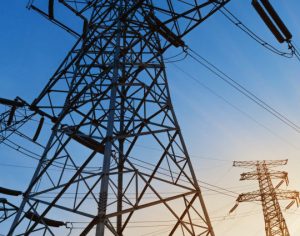 Understanding Ontario’s energy market and predicting peak events: Part 1
Understanding Ontario’s energy market and predicting peak events: Part 1
June 21, 2019 REDWIRE is news you can use from leading suppliers. Powered by FRASERS.
Posted by Enel X North America, Inc
Enel X North America is the preferred energy solutions partner for large commercial and industrial energy consumers acro... Read more
Subscribe
Free REDWIRE e-newsletter

Ontario has seen electricity prices reach historic lows in recent years., according to Enel X.
In this two-part article, Enel X North America discusses the importance and complexity of predicting peak electricity demand in Ontario.
Ontario has seen electricity prices reach historic lows in recent years. Since 2015, monthly average Hourly Ontario Energy Prices (HOEP) have not exceeded $0.033/kWh, and in one month fell as low as $0.0032/kWh.
Unfortunately, these all-time lows in power prices have not translated into savings for energy consumers. Since 2015, most in the province have paid an average of $0.11/kWh for electricity — more than three times the average HOEP in that period.
By now, it’s no secret that the Global Adjustment (GA) is the largest component of electricity costs in Ontario, accounting for more than 70 per cent of supply-related electricity charges on average. In 2018, Ontario customers are projected to pay nearly $12.8 billion in GA charges alone.
However, based on the way these charges are calculated, the GA actually presents an enormous opportunity for large energy users to avoid costs. A program in the province called the Industrial Conservation Initiative (ICI) creates incentive for large energy users to reduce consumption when the grid is at peak demand. Any facility with at least one MW in average peak demand — as well as those in select industries with an average peak demand of 500 kW or higher — can opt in to the ICI and pay GA charges based on their consumption levels at the five hour-long intervals when the grid sees its highest demand levels throughout the year. Energy users that can anticipate when these system peak hours are going to occur and reduce demand proactively can reduce GA charges by more than over $500K per megawatt per year.
While this sounds simple enough, accurately predicting when these peaks in electricity demand will occur has become a daunting task in Ontario. For those looking to take this approach to manage GA costs, it’s important to understand what makes predicting system peak events so complex.
Weather
Weather drives peak electricity demand in all major power-consuming regions, and Ontario is no exception. As temperatures rise in the summer and air-conditioners run full-tilt, demand can spike significantly.
While the relationship between temperatures and load is relatively straightforward, Ontario summers are often subject to severe humidity, which complicates the picture. Humidity not only amplifies high temperatures — making 30oC days feel like 35oC — but also increases the likelihood of thunderstorms. Rainfall can rapidly drop temperatures, which in turn can send electric demand plummeting and cause a disconnect between demand projections and actual demand levels on the grid.
While rainfall typically does not occur on peak days, it is not unprecedented. Precipitation has been a factor in three peaks over the past six years (ten per cent) and has essentially shifted peaks earlier in the day than the typical peak period (5-7 pm).
Unfortunately, it is still difficult to predict exactly when and where these kinds of weather events will occur. While Ontario is a sprawling province, significant load centres are located in small areas, which means the impact of precipitation on demand trends will vary based on how it affects precise locations within the province.
Coming up in Part 2: More on the Industrial Conservation Initiative, and allocated quantity of energy withdrawn.
To learn more about how Ontario businesses are leveraging energy-storage technology, read this whitepaper from Enel X, Understanding Ontario’s Energy Storage Opportunity.
For more information, contact Enel X.
Share
Posted by Enel X North America, Inc
Enel X North America is the preferred energy solutions partner for large commercial and industrial energy consumers acro... Read more